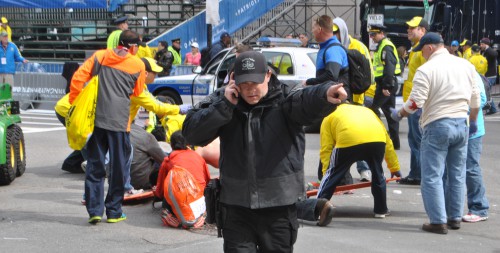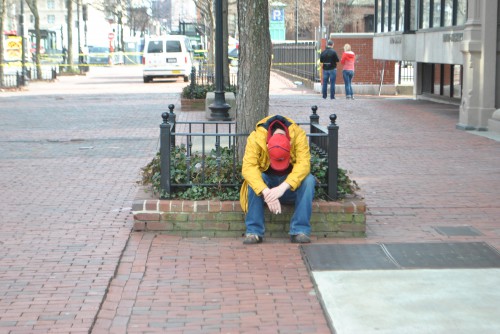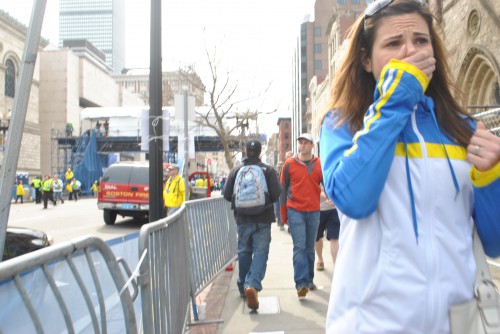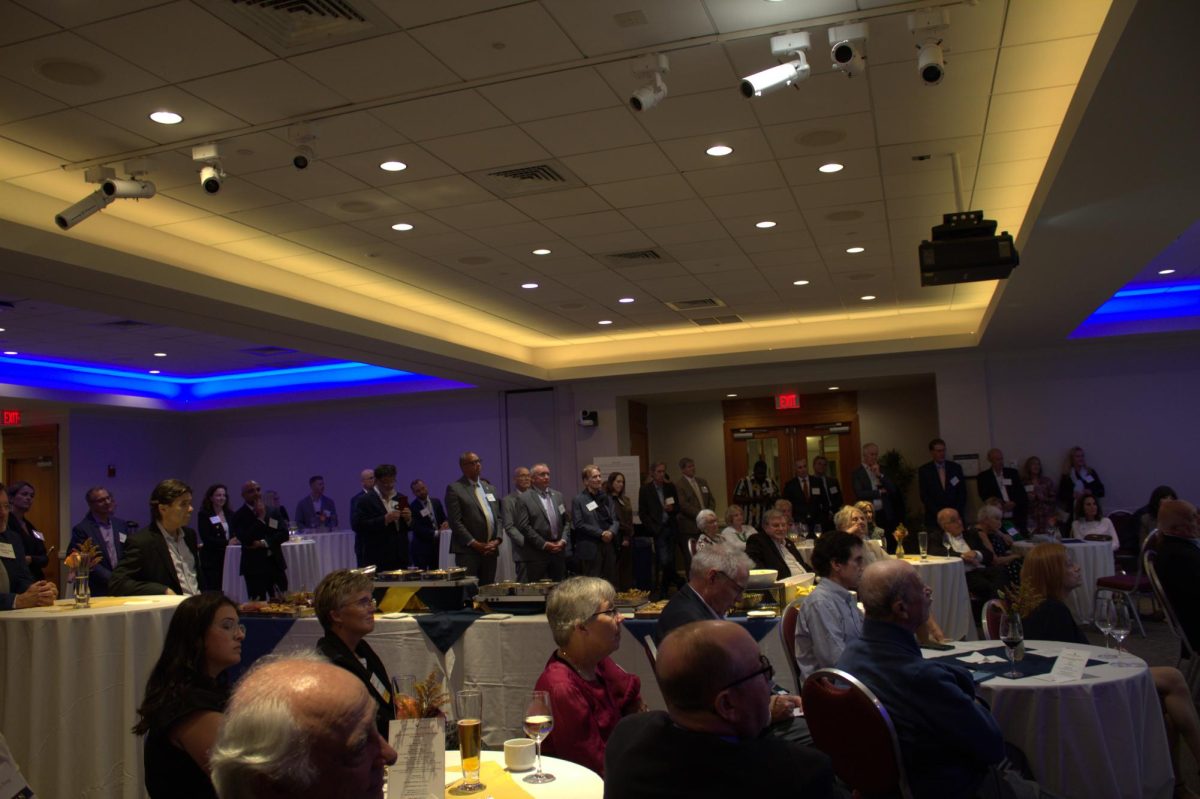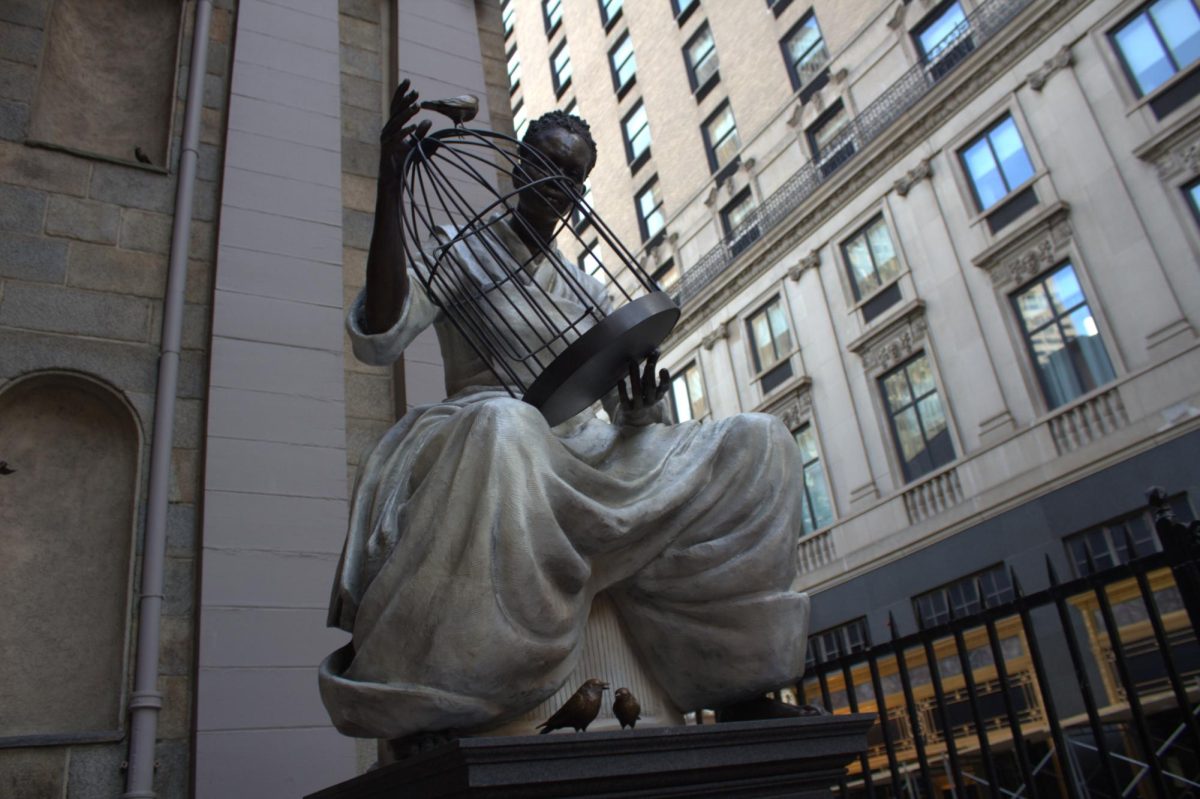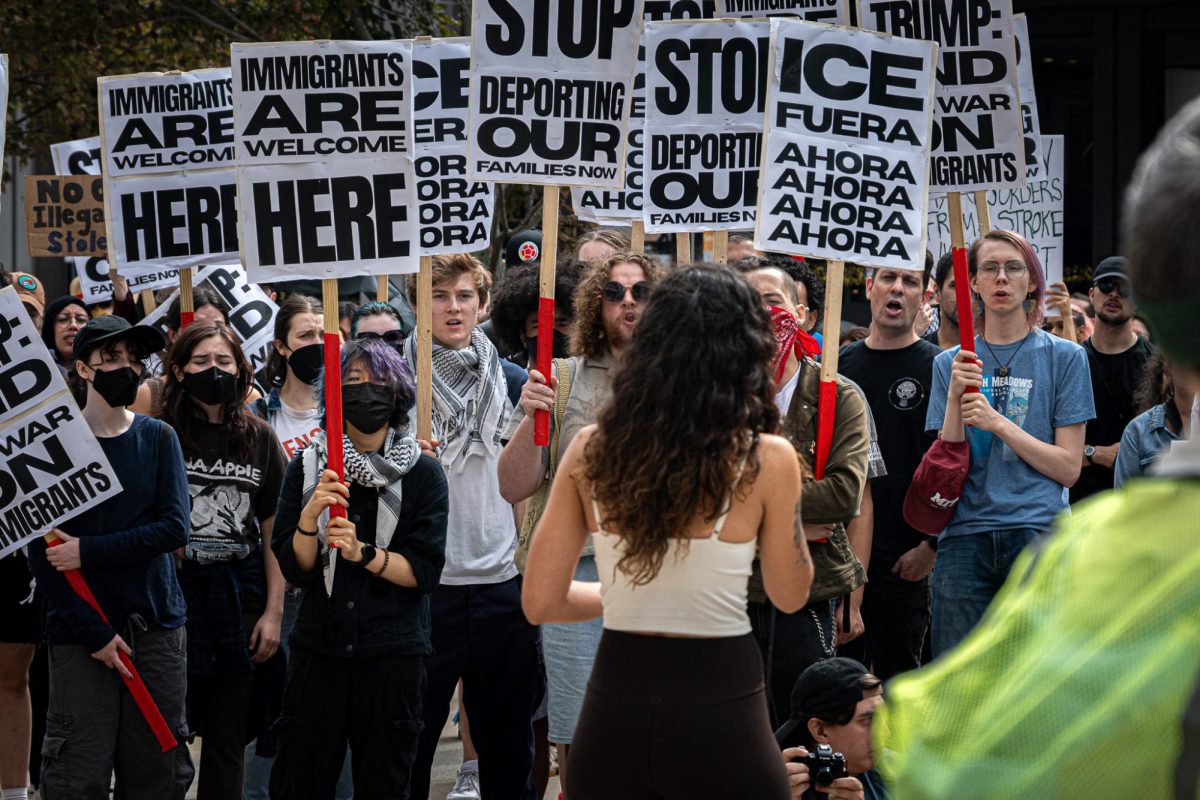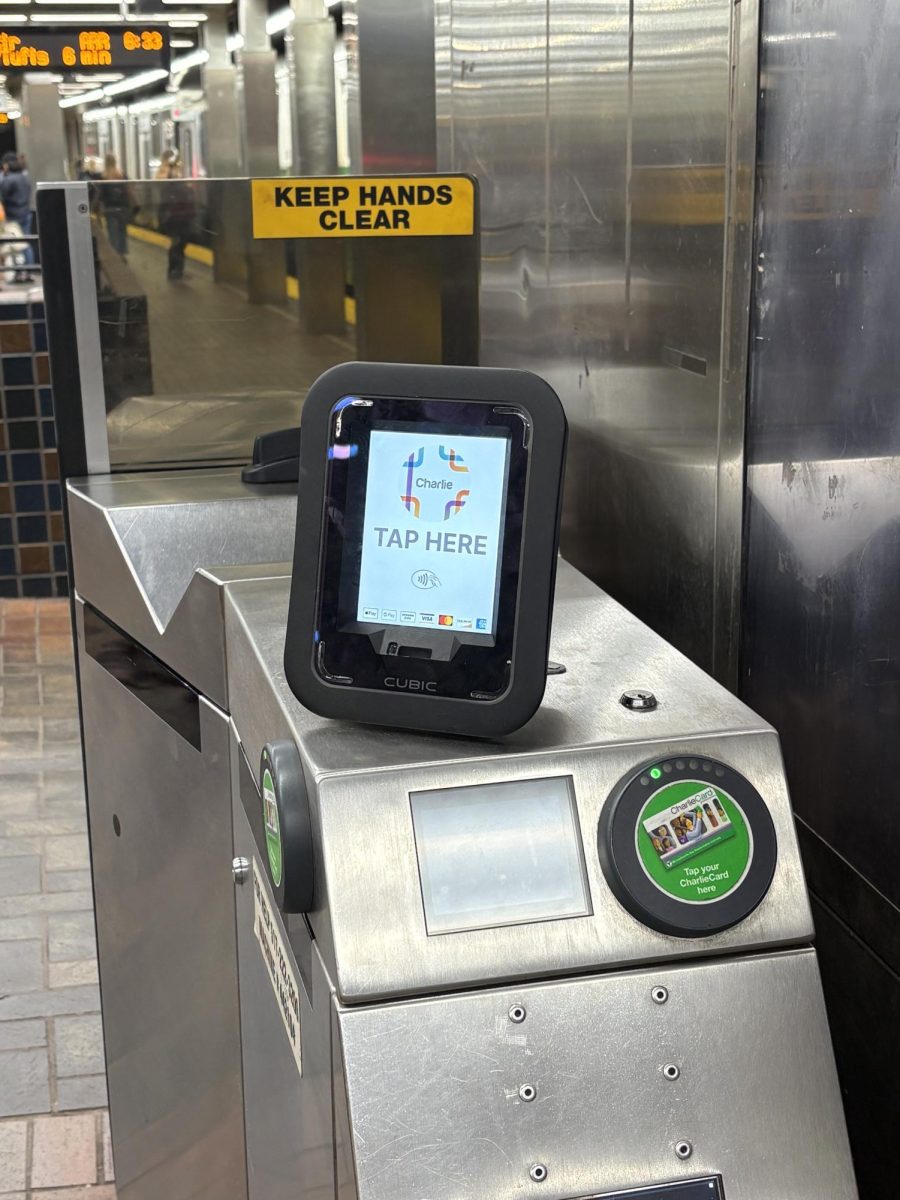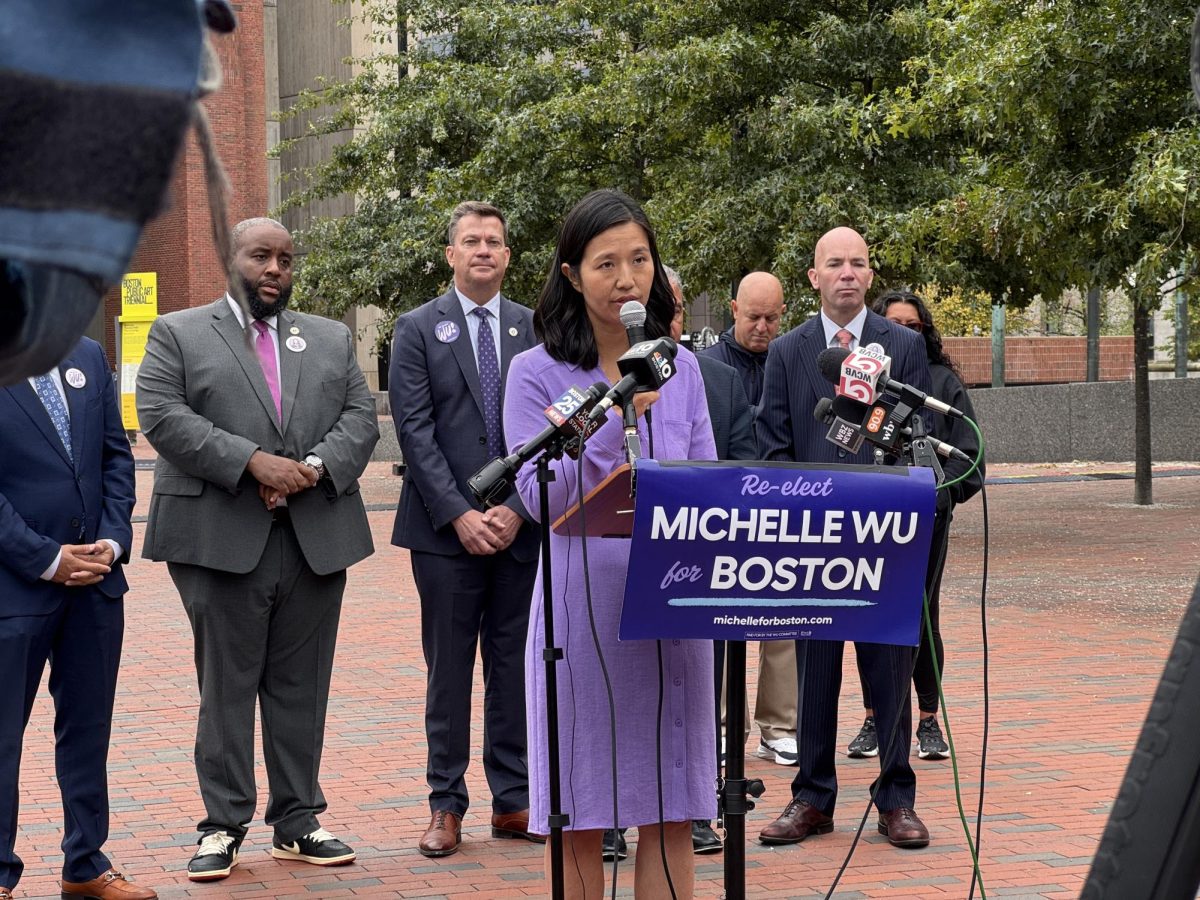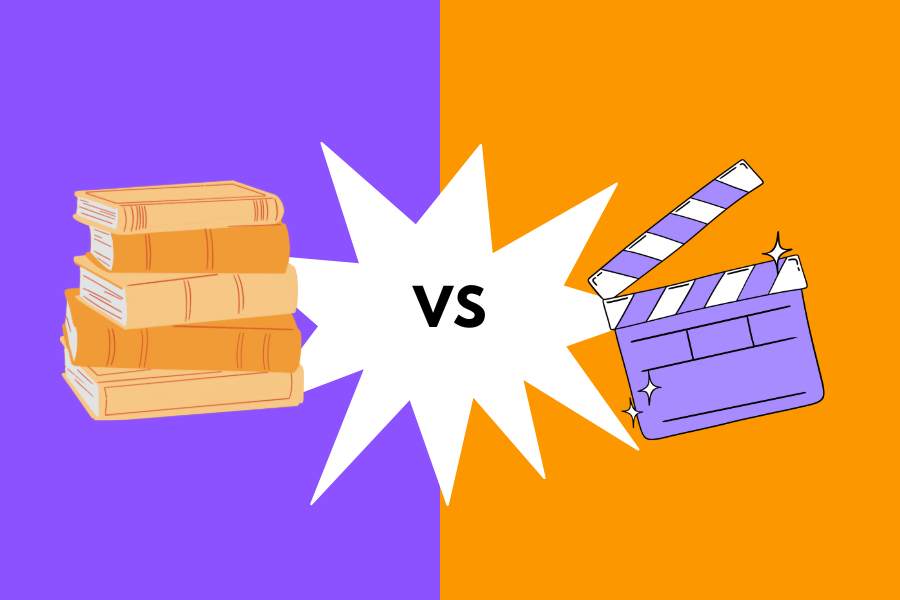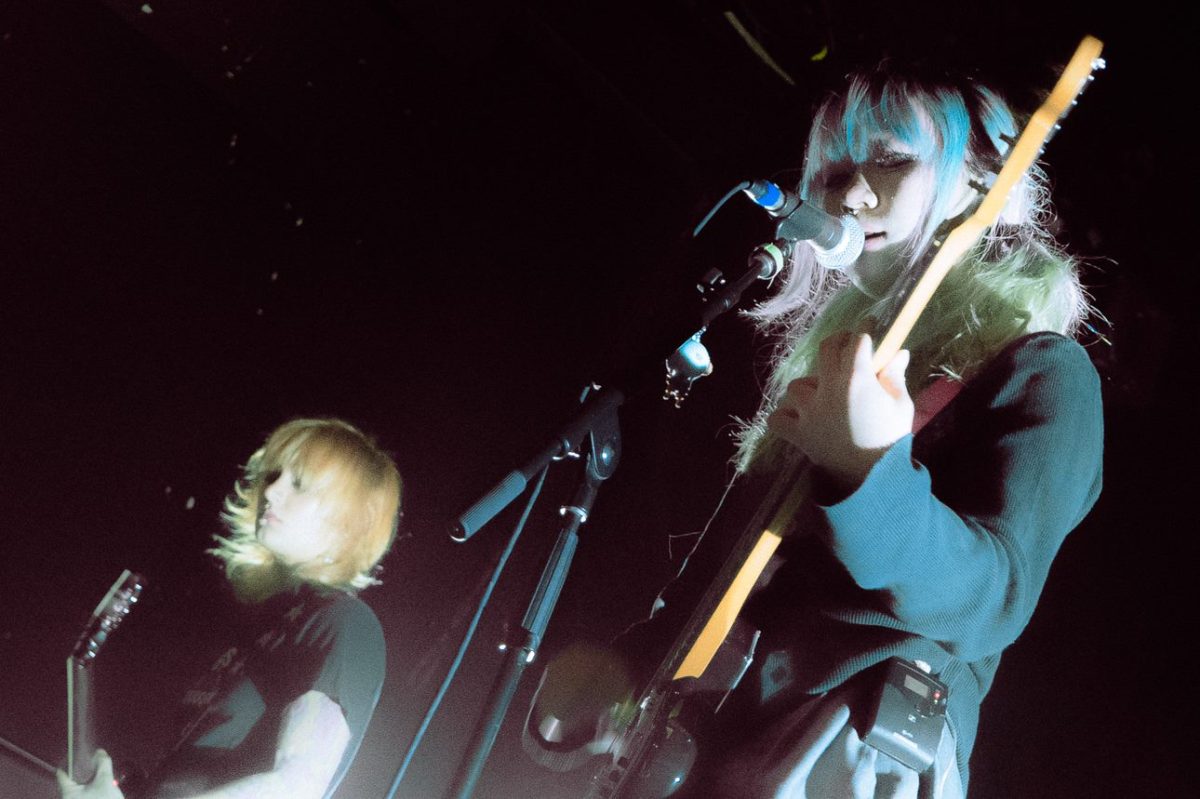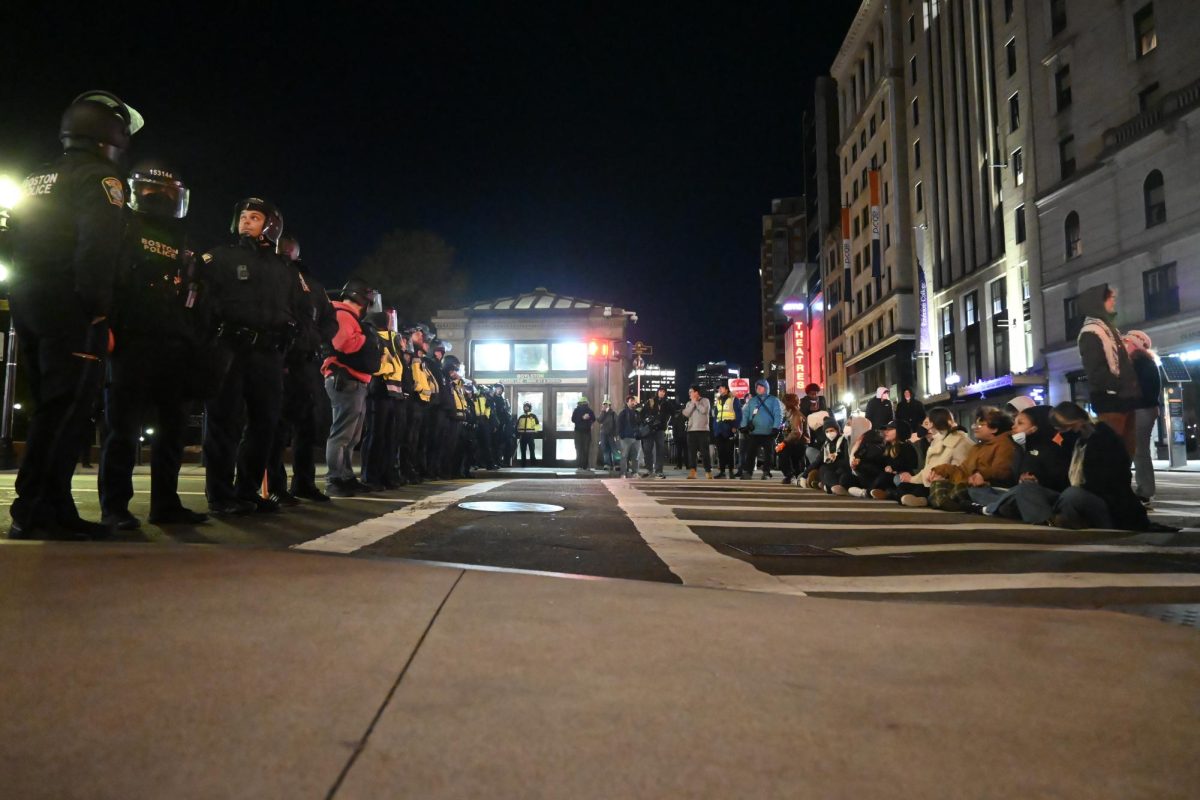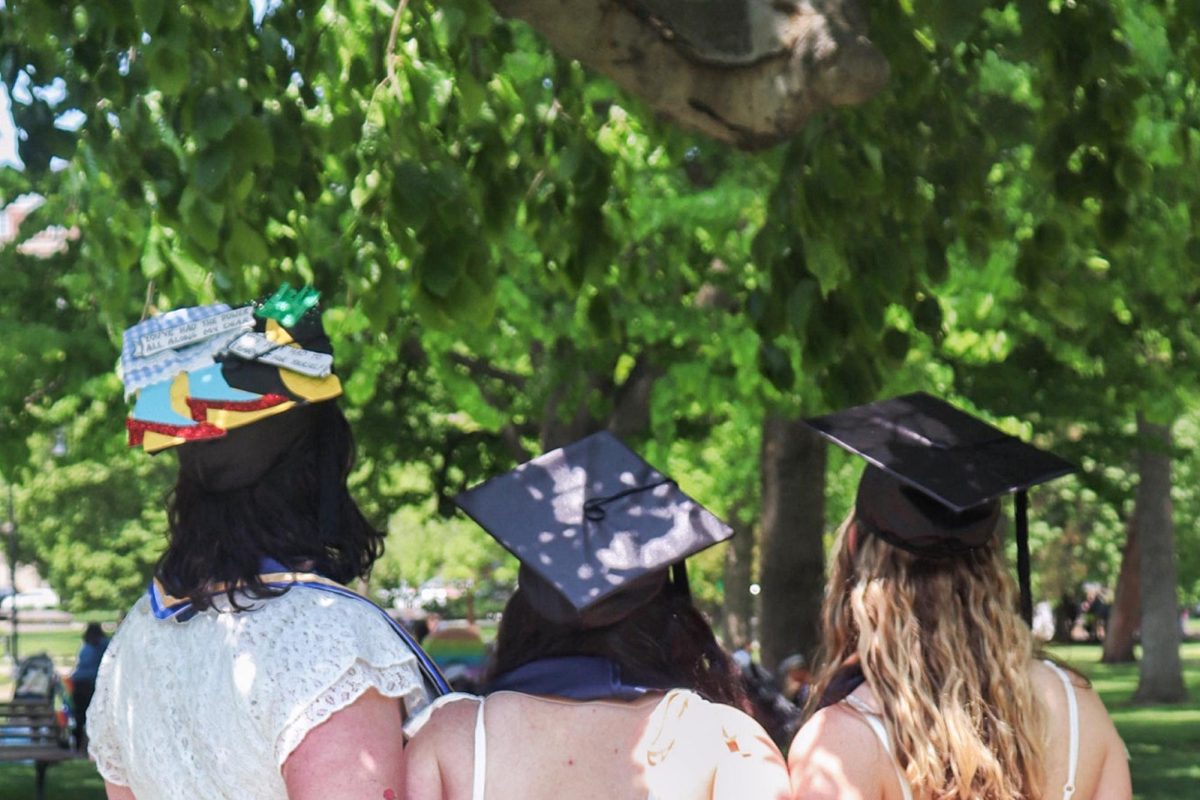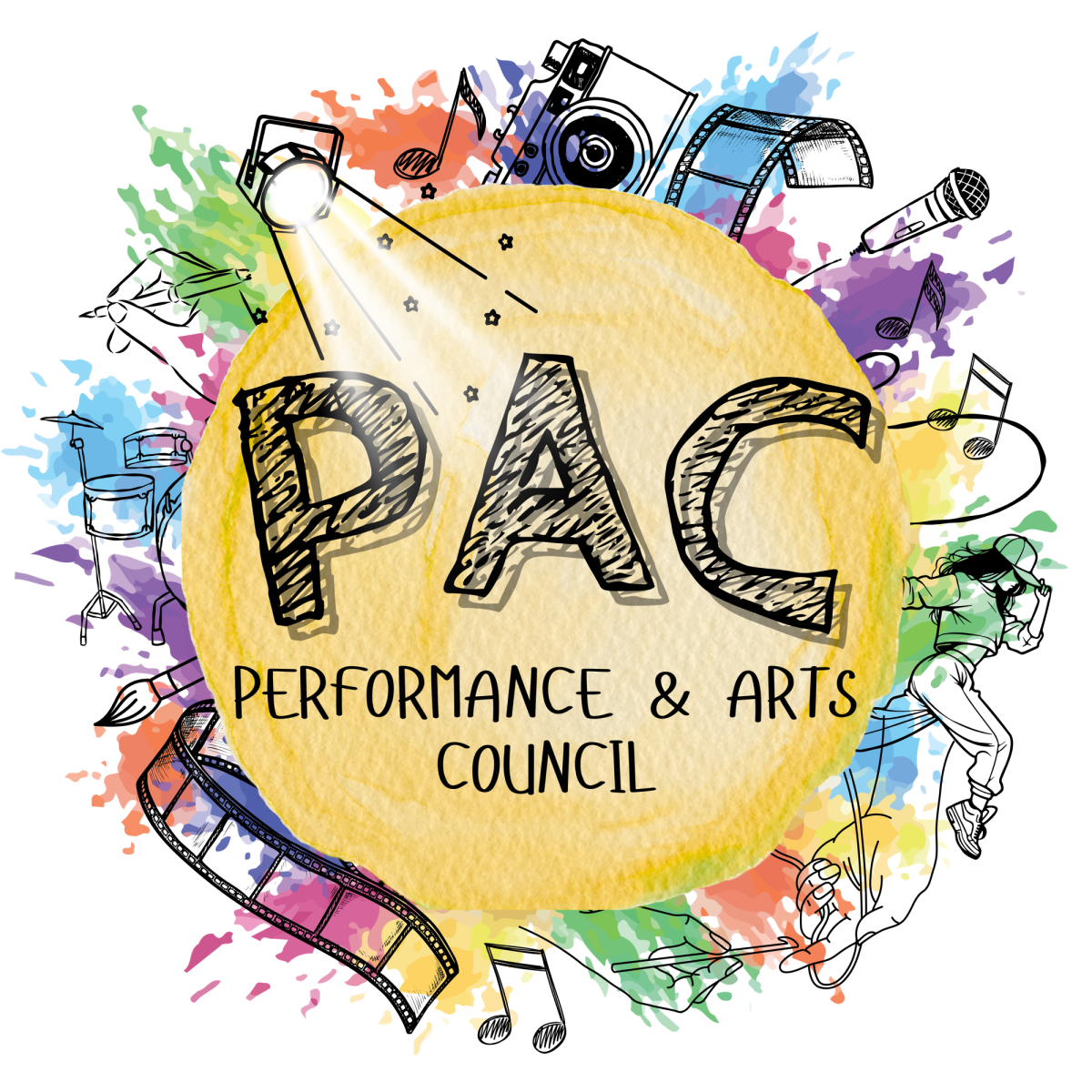Suffolk University prides itself on being in the heart of Boston. This pride was shown when one of the city’s oldest traditions, the marathon, was a victim of terrorist attacks.
Print journalism major, junior Allison Thibault, was taking part in the celebration as she stood by the finish line of the Boston Marathon.
“It wasn’t super packed, but there were still a lot of people…people were still watching, still cheering.” Thibault was originally behind the flags lining Boylston Street, however, they blocked her view of the race and the crowd was about “three rows of people deep.” She and her cousin then decided to move further down Boylston, where it crosses Exeter Street. They stood there for about two minutes when they heard the blast. “I was thinking ‘oh, they are shooting off a cannon.’ When I looked back over smoke covered the street, people were running and screaming…I did not process it, I just knew I had to leave.” Thibault and her cousin ran down Exeter Street. “People were sobbing, I saw a middle aged guy screaming a girl’s name.”
The two explosives were placed inside backpacks and dropped into trash cans about 100 yards away from each other, according to an Associated Press source. The first explosion occurred at the 600th block of Boylston Street in front of the Marathon Sports store, while the second bomb detonated ten seconds later at the intersection of Boylston and Ring Road, right in front of the Forum bar. The AP source released details on the explosives saying they were “homemade bombs” built out of pressure cookers filled with metal shards and ball bearings.
Suffolk alumnus Alex Pearlman, who is currently a Digital Product Manager at Boston.com, was at the Forum when the explosions went off. The building shook, the room became filled with smoke, and she was ordered to leave in what she called an “organized chaos.”
As she exited on the alley by Exeter Street. “people were running everywhere…they had no idea what was going on.” However, Pearlman’s adrenaline kicked in. “I didn’t think about it twice, I grabbed my camera and ran directly towards it.” Heading opposite from Thibault, she reached Boylston Street. What was once crowded by marathoners and cheering crowds was now littered with “blood, bodies and broken barricades.” Pearlman was taking pictures for a for a couple of minutes before she was ordered to leave the area by Boston Police.
“I have been in the middle of a gunfight…covered Occupy Boston, I have felt this adrenaline before, but never like that,” said Pearlman, “I have been looking at pictures of this kind of carnage, trying to decide which picture is the best. Looking at charred bodies, war victims, constantly looking at bloody pictures…it’s not the same when you live it and breathe it.”
The improvised explosive devices killed three people and injured 176 people at the time of this writing. One of the deaths is a Boston University Graduate Student while seven Emerson students, three Northeastern University students, three Tufts University students, two Boston College students, one Berklee College of Music student and another Boston University student were among the wounded, according to the universities.
Junior Dan Lampariello was stationed about 300 feet away from the finish line, by the Lord and Taylor on Boylston. When the explosions went off he thought it was fireworks or something, he was wondering what celebrity had crossed the finish line. He raised his camera to take a picture of the smoke rising after the first incident when he captured a shot of the second explosion. The picture has been circulated in major news outlets including Reuters and the Associated Press. Soon after though, the panic reached him. “People were trampling each other…my uncle and cousin were both shoved to the ground; it was definitely just a scene of chaos.” Lampariello took shelter in a hotel nearby. “You never expect to go through this in your lifetime especially as a college student.” The attack, which the White House has called an ‘act of terror,” happened roughly four hours into the oldest marathon in U.S. history.
Suffolk alum Derek Anderson who currently works as a Metro Correspondent at the Boston Globe was one of the many people inside a building when the explosions occurred. “I was working at my second job about half a block from the second explosion. [The explosions] shook the building so much I was worried the glass was going to blow.” By the second explosion, the manager of the store rushed everyone into the basement. “There were at least 100 of us shoulder to shoulder,” said Anderson, “I didn’t know what to think, all I knew was something was wrong, something was really wrong and we had to get in.” When they were evacuated into Massachusetts Avenue, Anderson said he saw “helicopters circling around” and “he was glued to his Twitter feed” for updates.
Emergency personnel stationed at the marathon finish were quick to respond to the incidents, providing medical care with the equipment available nearby. “As horrific as an event like this is,” said Anderson “so many acts of kindness, bravery, and just unity have been so bright…it’s really impressive.”
Suffolk University sent out an email to students roughly an hour after the attacks, warning students to remain clear of the marathon finish line. Once the gravity of the event was understood, a letter was sent out by President McCarthy.
The sun rose to a different Boston. The National Guard was stationed at every train station, armored police surround major landmarks, and the twelve blocks surrounding Copley Square have become the biggest crime scene in the city’s history. “I woke up angry,” said Anderson, “I’m not comfortable. I have a thirst to want to know why.”
While some people tried to go on with their normal routines, Assistant Professor of Marketing at Suffolk, Stephanie Lawson had a revelation. “I obviously had a lecture planned,” said Lawson “but I thought about it yesterday, ‘I can’t go in there and talk about consumer satisfaction when this thing just happened right here.’ There is a big service component to our job…I never want to forget what it feels to be their age.”
Lawson brought her 10 a.m. Consumer Behavior class to Dunkin Donuts instead of giving the normal lecture. Students were allowed to leave if they wanted but a small number came back to the class. “We talked about what happened and by the end everyone was laughing and everyone was in a good mood,” said Lawson. “I wanted to tell them that it doesn’t matter how you deal with this, everyone heals in different ways. Maybe your friend needs to post everything on Facebook, maybe they need to watch 24 hours of news.”
The university’s Counseling Services offered walk-ins and appointments all day on Tuesday and together with the Interfaith Center gave students an ability to express themselves and clear the air. “I hope that the culture at Suffolk changes,” said Lawson. “I read a story that people wanted to transfer because there is no sense of community and I feel like a day like today created a great feeling…a strong community.” The American Red Cross set up a blood drive at Suffolk as well and had to turn back donors as early as 12:30 p.m. due to an overwhelming number of volunteers.
“I try to see logic, I’m not going to speculate,” said Thibault, “I could have walked right next to this guy, he could have stood right next to me…I was standing next to a bomb and didn’t even know it, literally just chilling there for like ten minutes. It wasn’t until I saw the video at home…I was ten people away from getting my leg blown off.”
Pearlman understands she is “still in shock. The moment I decide to leave war corresponding, I run into a bombing.” She claims that she was scared to ride the T, “not even going to the office today. I’ll be ok though, time will heal.”
Anderson is confident Boston will grow from this event. “We are a gritty city, we don’t give up,” he said. “We won’t forget, but I am positive we can rebuild. I’ll have to go to work at the same place [when] they reopen…keep on going.”
Suffolk University will hold a Service of Remembrance at 10 a.m. in C. Walsh Theatre this Thursday, April 18.


